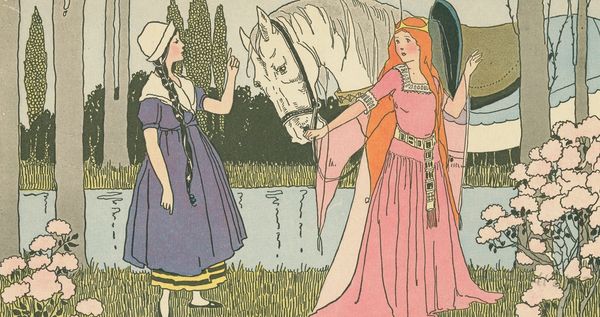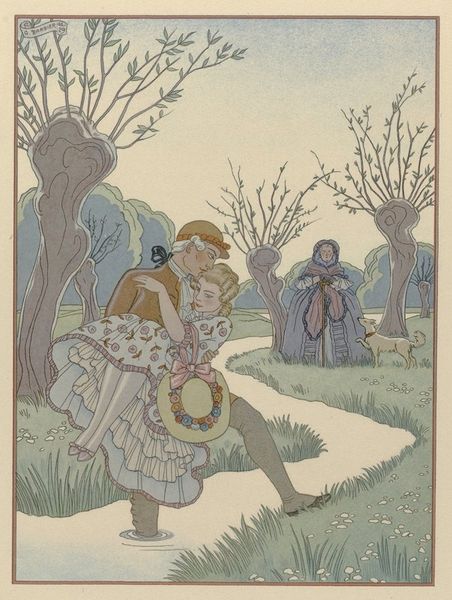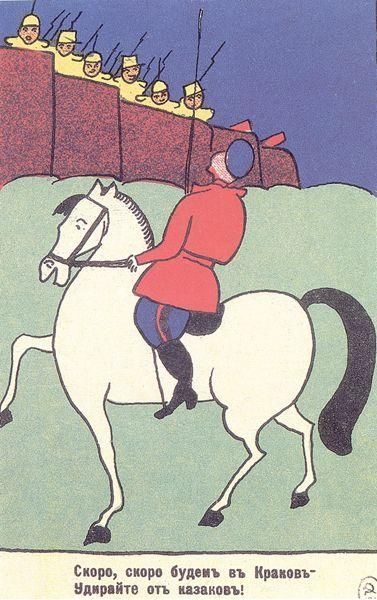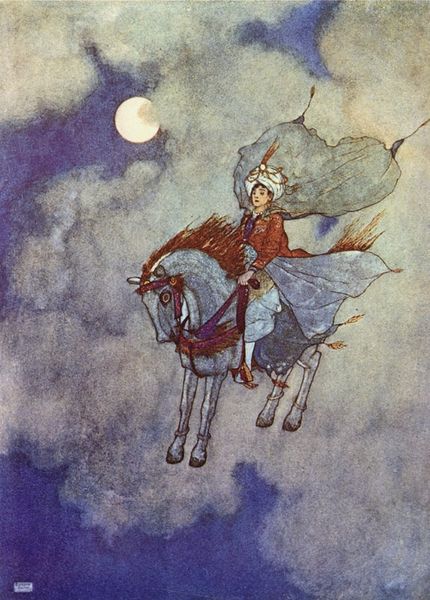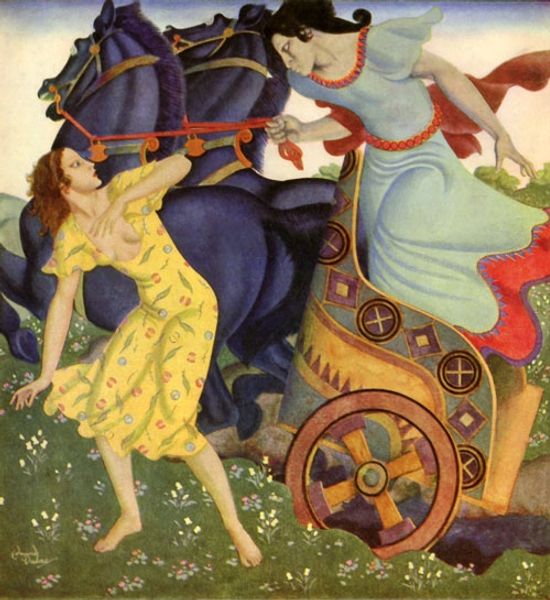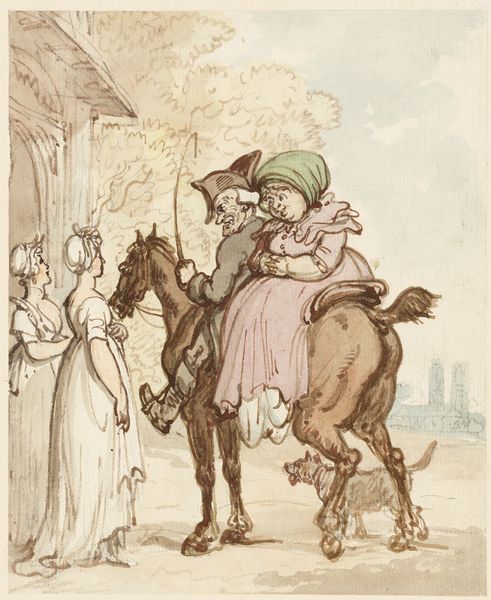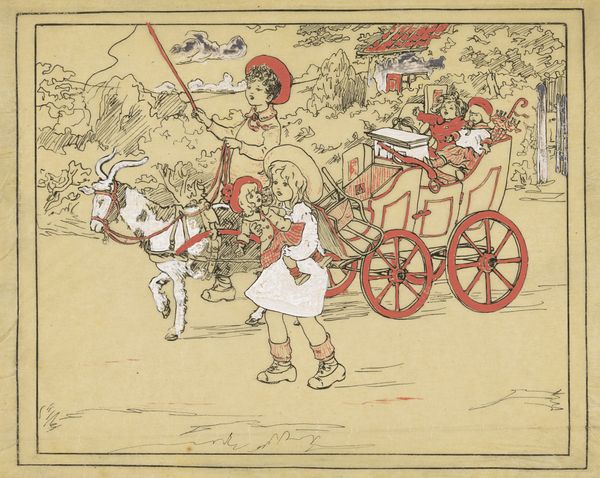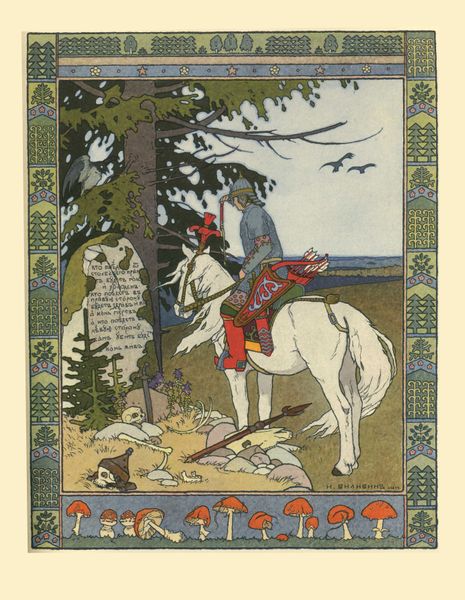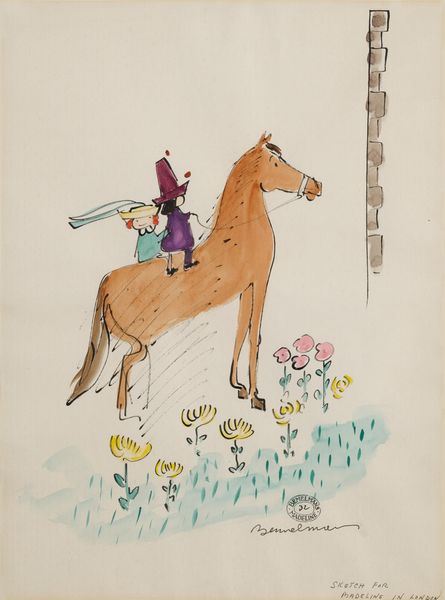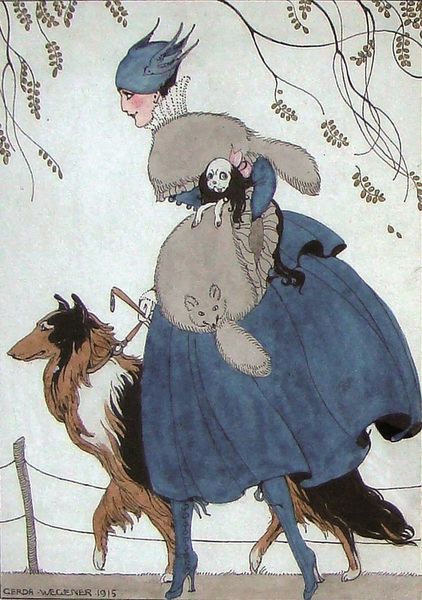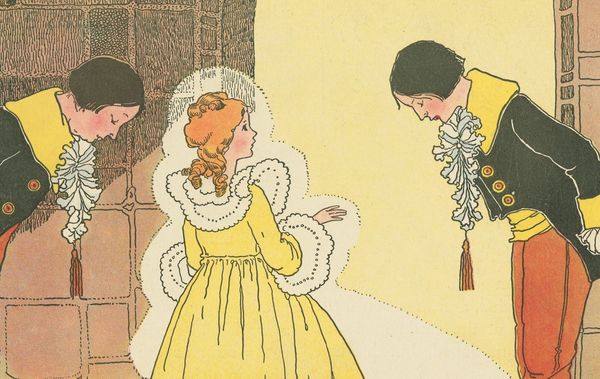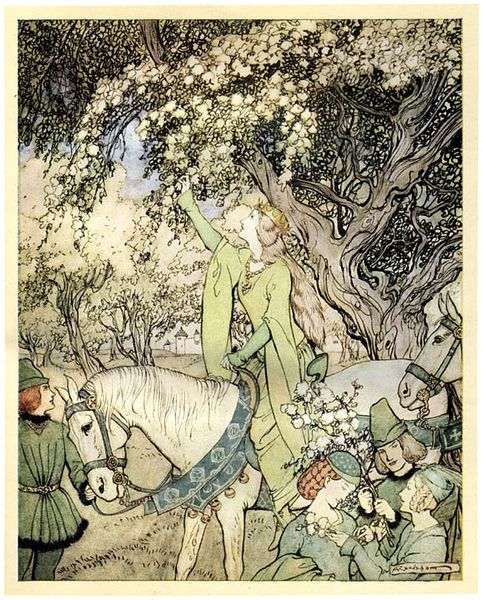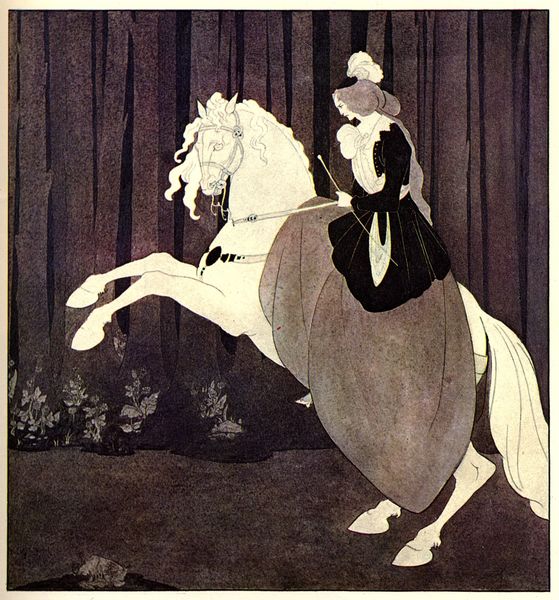
Copyright: Public Domain: Artvee
Curator: I find myself immediately drawn into this watercolour illustration. There is something sweetly melancholic and familiar, in this composition—can you share some background, Editor? Editor: This is Margaret Evans Price’s “Toads and Diamonds”, created around 1921. The work’s title gestures at folkloric origins, referencing a story with moral dimensions about how kindness yields rewards, while wickedness generates curses. Curator: Curses is right—the crying girl definitely brings this sentiment forward. And this reminds me—given the romantic treatment, what do you make of Price using watercolors? They seem deceptively delicate, considering the narrative's heavier themes. Editor: Absolutely. Watercolour is a tricky medium to control, which seems pertinent given the subject matter: the original fairy tale source deals centrally with the control of young women in the household economy, where performing specific kinds of work opens, or closes, certain options. Moreover, the flat application seems pointed here. Curator: That’s an interesting interpretation. From my perspective, the flatness almost enhances the theatricality of the scene, fitting into the romanticism so often displayed at the time. Price created costume designs, painted murals, and wrote several children’s books, all avenues in which art plays a clear social role. Editor: Right, that kind of social-minded engagement seems aligned to the material, watercolour is quite versatile and portable, after all. This relates to your earlier mention of the melancholic sentiment of the work—perhaps it evokes, even if gently, the experience of many working people at the time. Curator: An intentional choice to democratize art via familiar social parables. Very intriguing. But, even considering Price's history and clear intentions, it doesn't completely quell this reading—to what extent are fairy tales ever uncomplicated in what they wish to convey? Editor: That is a solid point—nothing is ever truly simple. Though Price employed familiar material to convey an everyday narrative about kindness and wickedness, it also appears that she prompts the viewers to consider who exactly does what and why—a question that remains salient to date. Curator: Indeed, and in that, I see its enduring charm and historical resonance. Thanks so much for shedding some light. Editor: My pleasure. There is certainly much to further unpack regarding the legacy of craft in art.
Comments
No comments
Be the first to comment and join the conversation on the ultimate creative platform.
